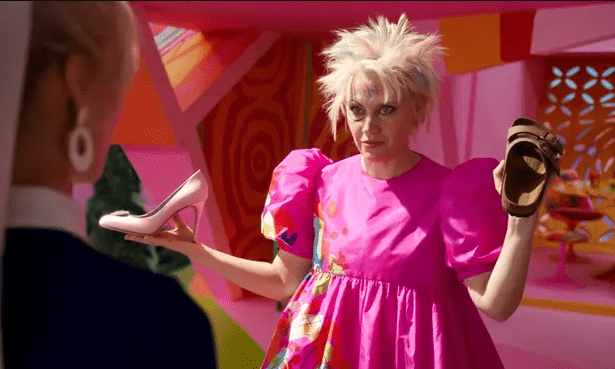In the fantasy adventure film “Barbie,” directed by Greta Gerwig, Barbie, and Ken venture into the real world to save Barbieland. The movie cleverly pokes fun at Barbie dolls and explores their complex legacy.
Greta Gerwig’s “Barbie” is an imaginative exploration of creation myths set in Barbieland, a parallel universe inhabited by various iterations of the iconic Mattel doll. The film delves into the toy conglomerate’s vast archive, blending successful products, discontinued merchandise, and middling ideas to create a rich and quirky narrative.
Despite being known for her shrewd and narratively precise dramas, Gerwig impressively infuses the corporate movie with humor-driven storytelling. The film is filled with jokes that playfully satirize Mattel, challenge the doll’s lore, and highlight the contradictions within our society’s gender norms.
The visually stunning Barbieland, brought to life through Sarah Greenwood’s production design and Jacqueline Durran’s costuming, is a pink fever dream. With funky compositions by Mark Ronson and Andrew Wyatt, along with bubblegum anthems from Dua Lipa, Nicki Minaj, and Ice Spice, the film creates a captivating atmosphere. Engineless vehicles roam the streets, and flying is the preferred mode of transportation, capturing the doll’s whimsical nature.

In this feminist utopia, Barbies hold positions of power, from being the president and members of the Supreme Court to doctors and physicists. The voiceover commentary by Helen Mirren adds a delightful storybook quality to the narrative.
The film’s protagonist is Stereotypical Barbie, portrayed by Margot Robbie, and her counterpart Ken, played by Ryan Gosling. They embark on an adventure to the real world, seeking answers from Weird Barbie (Kate McKinnon), an outcast with sage-like wisdom, about existential thoughts plaguing Barbie’s perfect life. The story explores the relationship between Barbies and their human owners, blurring the lines between the two worlds.
In California, Barbie’s sense of self is challenged, while Ken’s understanding of the patriarchal realities of the human world grows. The movie deftly incorporates au courant commentary through Barbie’s encounters with real people, including the all-male executive suite of Mattel, a teenager with a strong disdain for dolls and fascism, and a Mattel secretary with a unique love for the toy.

“Barbie” artfully balances humor with emotional depth, echoing themes explored in Gerwig’s previous works like “Lady Bird” and “Little Women.” It delves into the complexities of self-definition and the intricate relationships between mothers and daughters, while questioning societal categorizations.
Despite its smart execution, the film bears the burden of serving a corporate brand, leading to some sacrifices in storytelling. The mix of politics and emotional depth sometimes feels hollow, but Gerwig’s signature style leaves a lasting impression.
In conclusion, “Barbie” is a clever and entertaining comedy that successfully revitalizes an iconic toy into a rich and thought-provoking cinematic experience. While it may face challenges in balancing its corporate franchise ambitions, the film remains a delightful watch for both Barbie enthusiasts and skeptics alike.